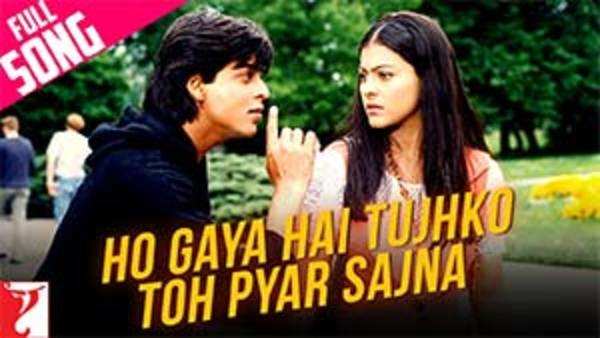
This was wondrously magnified throughout the film. And it would all still stick and make sense, thanks to different permutations and combinations with similar note structures. Tujhe dekha could be sung as a verse for Na jaane mere dil ko, which could also be tied in with Mere khwabo mein or with Mehendi laga ke rakhna. One song flowed into the other in the seven-song soundtrack with much ease, turning it all into a harmonic flux. Was it only because the melodies were soft, romantic, simple and, thus, super catchy? We revelled in the extreme hummable goodness of the music.

But never did we fret over Khan’s singing voice, which changed magically so many times in one film. Kajol had Lata Mangeshkar and Asha Bhosle, though Bhosle sang just one song (Zara sa jhoom loon) for a drunk Simran. For instance, Shah Rukh Khan had three playback singers - Udit Narayan, Kumar Sanu and Abhijeet. The songs worked, even in the face of very basic issues. The compositions for Aditya Chopra’s directorial debut were fresh and hit the right note, despite being from the same Nadeem-Shravan template of synth-and-dholak. It worked only because composers Jatin-Lalit innovated a tad more than the others. Ghazal had already found a niche in the 1980s, another mediocre decade film-music-wise, filling the void for good music.ĭDLJ was slightly different in terms of orchestration from Bollywood music of the time. Liberalisation had paved the way for the entry of MTV and Channel V, spawning a generation of pop artistes, who aspired to make music differently. In fact, terrible tunes in Bollywood were the reason why Indipop and ghazals flourished. But what one didn’t anticipate was how it ended up reinventing the music of the 1990s.įor a whole decade, before DDLJ arrived, film music was uninspiring, though there were exceptions such as Saajan (1991), Jo Jeeta Wohi Sikandar (1992), Aashiqui (1990), Roja (1992), Hum Aapke Hain Kaun.! (1994) and Deewana (1992). After all, it was a Yash Chopra production with Shah Rukh Khan and Kajol as the lead pair.

When Dilwale Dulhania Le Jayenge released in 1995, its music, bursting with simplicity in writing and melodic structures, was expected to do well. A song has to either boom loudest as one trundles along in an autorickshaw, or become a signature tune in an antakshari game. (Express archive photo)įilm songs have to go through certain rites of passage for them to enter the Indian psyche. Written by Suanshu Khurana New Delhi Updated: Novem5:15:37 pm DDLJ, starring Shah Rukh Khan and Kajol, is set to return to Mumbai's Maratha Mandir.


 0 kommentar(er)
0 kommentar(er)
